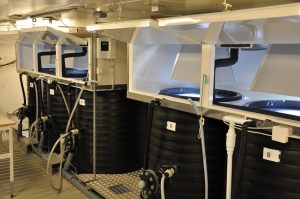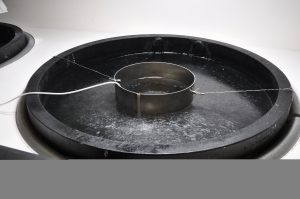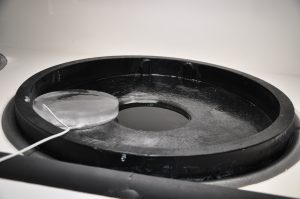Umeå University (UmU)SE-90187 Umeå
SWEDEN
Henrik Larsson
Please login or request access to view contact information.
Indoor – pelagic – marine, brackish, (freshwater), 12 tanks of 5 m depth, 2 m3 volume.
Outdoor- pelagic – marine, brackish, (freshwater), 24 tanks of 1 m3. Sediment may be added.
The facility is located close to the seashore in the northern part of the Baltic Sea. The water outside of the field station is ice covered for 3-5 months a year, and brackish with a salinity around 3 PSU.
The water intake to the indoor mesocosms is situated 800 m off-shore at 2 and 8 meter depths. The mesocosms can also be filled with sea, lake or river water transported from elsewhere. Filling can be done through filters of selectable mesh sizes, down to 1 μm, an semi-automatic water renewal system with controllable turnover rate are also available. The indoor facility consists of 12 cylindrical mesocosms with water columns 4.86 m high and 0.73 m in diameter (volume ca. 2 m3). Temperature can be controlled and manipulated in 3 different sections of each mesocosm. This enables for projects that require stratification, controlled convective stirring or both.
The light sources are Valoya R-258 (Light DNA), especially produced with the aim to closely mimic the spectra of the sun. These lamps are handled by time-programs that controls spectra and intensity according to lattitude and time of day.
Four freezers are installed on top of every three mesocosms, this enables control of the air temperature above the water columns down to -20o C. Projects that require ice can thus be carried out, and parameters such as freezing or thawing rate can be adjusted. This latter option allows for systematic seeding experiments.
The ventilation of the mesocosm hall is controlled by the CO2 content in the room, allowing for natural controls in experiments where the CO2 content in the water is altered.
The outdoor facility is available during summer. It consists of 4 large pools, each carrying 6 cubic mesocosms of 1 m3. The temperature is kept the same as in the water intake by using high rates of water flow through in the pools. Experimental designs can be supported by long-term ecological research time series of variables stored in an easily accessible database on the internet. About 70 international researchers have used the mesocosm facility during numerous experiments conducted over the past 10 years. Outcomes include two publications in top-ranked scientific journals regarding methylmercury levels in coastal environments.
Indoor: Temperature (-1o up to 30oC), stratification depth and strength, convective stirring in different levels, size fractionation of organisms in intake water (300 – 1 µm), light intensity and regime, adjustable water exchange, chemical parameters.
Outdoor: size fractionation of organisms in intake water (300 – 1 µm), chemical parameters.
Land-sea interactions, climate change, and impact of environmental pollution on organism stoichiometry and health, taxonomic composition, predator-prey interactions, food web processes and efficiency.
Mercury biogeochemistry, Impact of dissolved organic carbon on plankton respiration, growth and food web function, Fish population models and migratory behaviour.
Two Seaguard CTD equipped with PAR, conductivity, temperature, turbidity, Chlorophyll, Oxygen, CDOM and pressure sensors. Spectrophotometer, spectrofluorometer, scintillation counter, and basic laboratory equipment including salinity and pH meters.
http://www.umf.umu.se/english/field-station/chemical-analyses/
Our hostel is situated a few hundred meters from the field station. Ten rooms with two beds each are available as well as a large kitchen with fridges, freezer and cooking facilities. Additional accommodation and restaurants are also available in nearby Hörnefors.
http://www.umf.umu.se/english/field-station/accommodation/
http://www.umf.umu.se/english/field-station/biological-analyses/
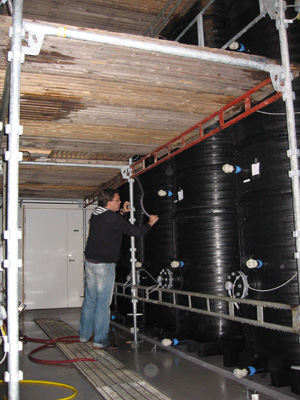 |
|||||||
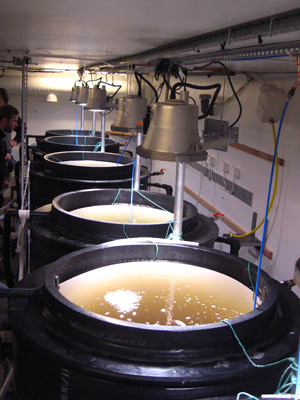
|
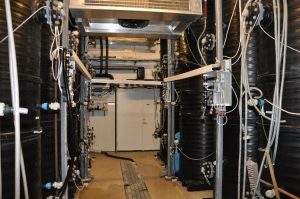 |
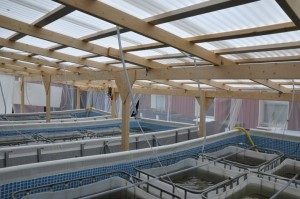 |
| MF-UMSC indoor at floor 1; Photo: M. Nordin | MF-UMSC outdoor; Photo: K. Viklund |

